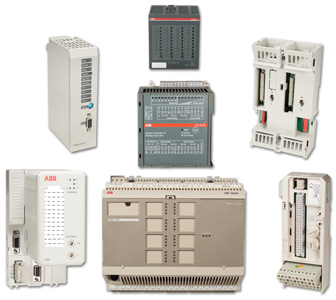Unlocking the Secrets of Siemens Simatic S5: A Deep Dive into Its Legacy and Power
The Siemens Simatic S5 series stands as a monumental achievement in the realm of automation and control systems. Introduced in the early 1970s, this series set the standard for programmable logic controllers (PLCs) and established a foundation that many modern systems still rely on today. The historical context of the S5 series is crucial, as it emerged during a period of rapid technological advancement that transformed industries worldwide. With its innovative designs and features, the S5 series became a linchpin in various industrial applications, enabling manufacturers to enhance efficiency, reliability, and automation processes. Its significance cannot be understated, as it paved the way for future developments in automation technology that continue to evolve and shape the landscape of industry.

Historical Context and Development of Siemens Simatic S5
The Siemens Simatic S5 series was developed in response to the growing need for more efficient and flexible automation solutions in the industrial sector. The story begins in the early 1970s when Siemens recognized the potential for programmable logic controllers to revolutionize manufacturing processes. The S5 series was officially launched in 1979, introducing several groundbreaking features, such as modular hardware architecture and a user-friendly programming environment. This period marked a significant shift from relay-based control systems to digital PLCs, allowing for greater precision and versatility in automation tasks. Over the years, the S5 series underwent several iterations and enhancements, incorporating advancements in technology and adapting to the evolving demands of various industries. By the late 1980s and early 1990s, the S5 series had established itself as a dominant player in the automation market, influencing the design and functionality of subsequent generations of control systems.
Specifications and Technical Features
The Siemens Simatic S5 series is known for its robust specifications and technical features that set it apart from its contemporaries. At its core, the S5 series offers a range of CPU options, including the S5-90U, S5-115U, and S5-135U, catering to different processing needs and application requirements. These CPUs support various programming languages, including ladder logic and statement list, allowing engineers to choose the most suitable method for their projects. Communication capabilities were also a significant focus, with the S5 series supporting several protocols, such as MPI and Profibus, enabling seamless integration with other systems and devices. The modular design of the S5 series is another standout feature, allowing users to customize their setups with input/output modules, communication processors, and power supplies. This level of flexibility and scalability provided users with the ability to adapt their systems to changing operational demands, a characteristic that many modern automation systems still strive to achieve.
Applications in Various Industries
The versatility of the Siemens Simatic S5 series is evident in its wide range of applications across different industries. In manufacturing, for instance, the S5 series has been instrumental in automating assembly lines, enabling precise control over production processes and improving overall efficiency. One friend of mine, who worked in a car manufacturing plant, often spoke about how the S5 controllers were vital in coordinating robotic arms for assembling vehicles, significantly reducing production time. In the realm of process control, the S5 series has found applications in chemical plants, where its ability to manage complex processes and ensure safety protocols is paramount. Moreover, the building management sector has also leveraged the capabilities of the S5 series for efficient HVAC control and lighting management systems. Each of these applications showcases the adaptability and effectiveness of the S5 series in addressing the unique challenges faced by various industries.
Legacy and Influence on Modern Automation Systems
The legacy of the Siemens Simatic S5 series continues to resonate within the automation industry, influencing the development of modern control systems. Its introduction of modular architecture and user-friendly programming environments has shaped the design principles of contemporary PLCs. Today’s systems often incorporate similar features, reflecting the foundational concepts that the S5 series introduced. Moreover, the emphasis on communication protocols established by the S5 series laid the groundwork for the interconnected systems we see today, where devices communicate and collaborate in real-time. As industries increasingly adopt Industry 4.0 principles, the relevance of the S5 series becomes even more apparent, as its innovative spirit continues to inspire advancements in automation technology.
Reflecting on the Siemens Simatic S5 Legacy
The Siemens Simatic S5 series is more than just a historical artifact in the world of automation; it represents a significant milestone that transformed industrial practices. From its innovative features and specifications to its diverse applications across various industries, the S5 series has left an indelible mark on the automation landscape. As we reflect on its legacy, it is essential to recognize the lessons learned from this series, which continue to inform the development of modern automation solutions. The principles established by the S5 series remind us of the importance of flexibility, efficiency, and communication in creating systems that meet the ever-changing demands of industry. The journey of the Siemens Simatic S5 series is a testament to the power of innovation and its lasting influence on technology.







